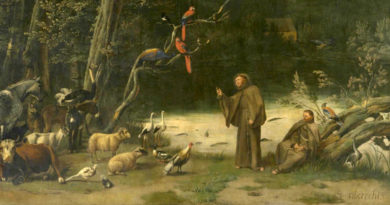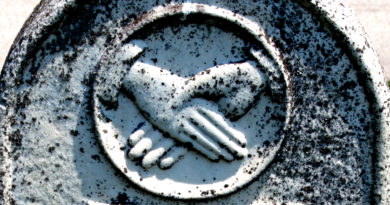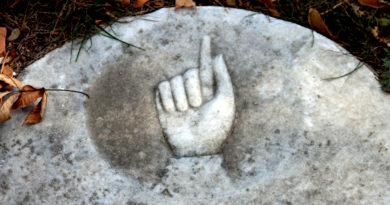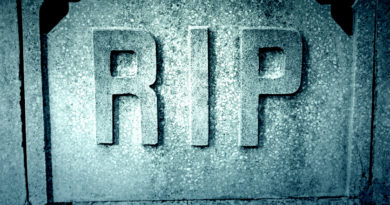What Does “Memento Mori” Mean?
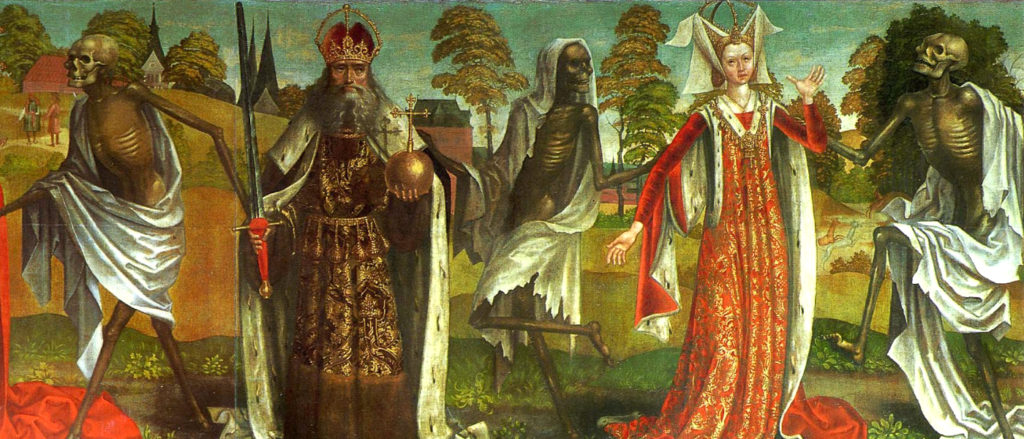
Like all memento mori, the painting’s imagery reminds us that Death is the “great leveler” and that everyone – even kings and queens – will eventually die. (Public-domain image.)
If euphemisms help people avoid the reality of death, then memento mori serve the opposite purpose. The term memento mori (pl.) refers to any reminder or warning intended to prompt human beings to remember the inevitability of death and their own mortality. Roughly translated, the Latin phrase memento mori means, “Remember that you must die.”
Memento mori are generally symbolic in nature and often appear in paintings, sculptures and other works of art. They also appear in song lyrics and musical compositions, however, as well as architectural details and decorations; photographs; religious rites; jewelry and timepieces; poems and literary writings; and, naturally, on cemetery tombs, headstones and gravemarkers. In the latter instance, a death’s head on a tombstone is a classic example of memento mori writ in stone.
The photo above provides a superb illustration of memento mori. This detail from the larger work Danse Macabre (the dance of death), painted by artist Bernt Notke in the late 1400s, depicts the reality of the human condition by showing that even the highest and most mighty, such as kings and queens, will ultimately “dance to their graves,” i.e., die.
According to popular legend, a servant originally uttered “memento mori” to a military leader as the latter celebrated a great victory during a public parade in ancient Rome. The servant did so to remind the general that, despite his success in battle, he too will ultimately fall.
While this story is likely apocryphal, the first recorded use of memento mori in the sense noted above occurred in the late 1500s. Among these initial usages, William Shakespeare included the term in his 1598 play Henry IV, Part 1 (Act III, Scene III) when Falstaff utters: “I make as good use of it as many a man doth of a Death’s-head or a memento mori: I never see thy face but I think upon hell-fire and Dives that lived in purple; for there he is in his robes, burning, burning.”
While skulls often feature prominently, other memento mori symbols also serve to remind us of the inevitability of death, such as:
- skeletons; human bones
- a decaying/decayed human corpse
- watches; clocks; sand flowing through an hourglass
- snuffed-out candles
- trees dropping leaves; flowers losing petals
- rotting fruit
- coffins; caskets; urns; boxes
- the Grim Reaper and his scythe
Much of the imagery and symbolism associated with Mexico’s Day of the Dead constitute memento mori, including sugar skulls, marigolds, the miniature skeleton sometimes baked into a loaf of pan de muerto (bread for the dead), etc.




